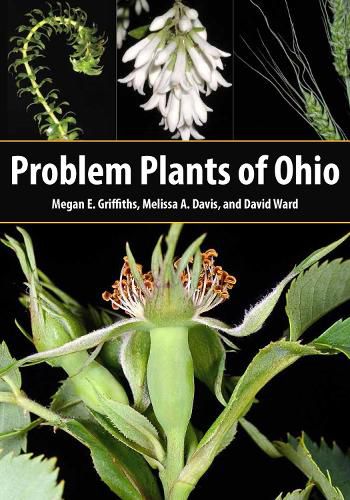Readings Newsletter
Become a Readings Member to make your shopping experience even easier.
Sign in or sign up for free!
You’re not far away from qualifying for FREE standard shipping within Australia
You’ve qualified for FREE standard shipping within Australia
The cart is loading…






A guide to identification and control of invasive plants.Problem Plants of Ohio is an informative guide, providing information on the identification and control of nonnative plant species formally listed as invasive or prohibited noxious weeds in Ohio. In addition, the book treats many additional species that are considered a nuisance in gardens, landscaping, or natural settings.
The book includes more than 900 photographs of diagnostic features to aid in the identification of 148 plant species. The accompanying text details the origin of the species’ introduction to North America, provides thorough and accessible botanical descriptions, explains the economic and environmental impacts of each species, and includes basic information on control measures. The authors also include suggestions for native alternatives to use in gardens in place of problematic horticultural species.
The first book of this kind written specifically about the state, Problem Plants of Ohio presents new research on the change in nonnative species over time and discusses how climate change will further exacerbate the issue of invasive species. It includes current distribution maps for each plant species.
A useful resource for master gardeners, landscapers, farmers, academics, and natural areas managers, Problem Plants of Ohio will be of interest to nonspecialists as well.
$9.00 standard shipping within Australia
FREE standard shipping within Australia for orders over $100.00
Express & International shipping calculated at checkout
A guide to identification and control of invasive plants.Problem Plants of Ohio is an informative guide, providing information on the identification and control of nonnative plant species formally listed as invasive or prohibited noxious weeds in Ohio. In addition, the book treats many additional species that are considered a nuisance in gardens, landscaping, or natural settings.
The book includes more than 900 photographs of diagnostic features to aid in the identification of 148 plant species. The accompanying text details the origin of the species’ introduction to North America, provides thorough and accessible botanical descriptions, explains the economic and environmental impacts of each species, and includes basic information on control measures. The authors also include suggestions for native alternatives to use in gardens in place of problematic horticultural species.
The first book of this kind written specifically about the state, Problem Plants of Ohio presents new research on the change in nonnative species over time and discusses how climate change will further exacerbate the issue of invasive species. It includes current distribution maps for each plant species.
A useful resource for master gardeners, landscapers, farmers, academics, and natural areas managers, Problem Plants of Ohio will be of interest to nonspecialists as well.